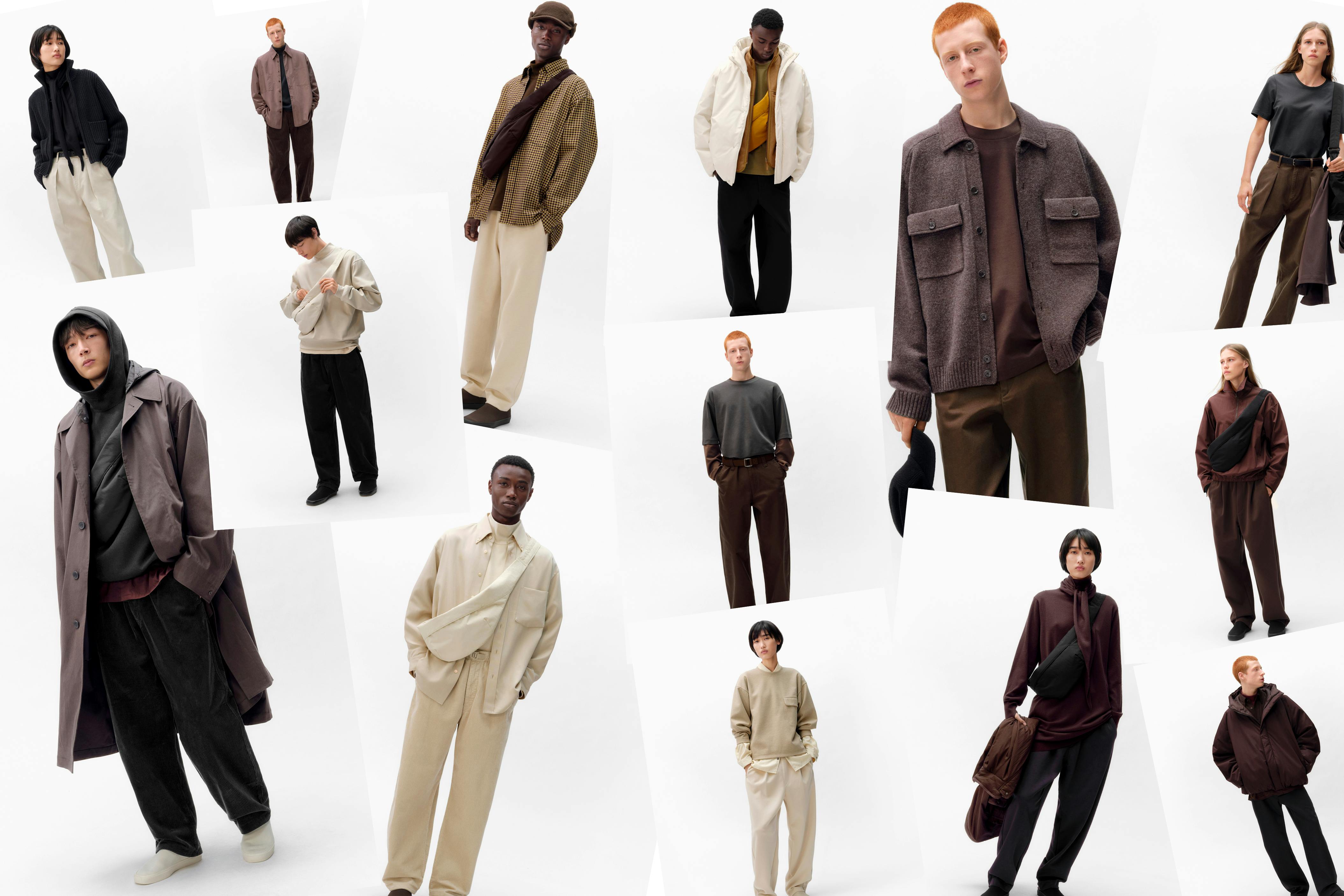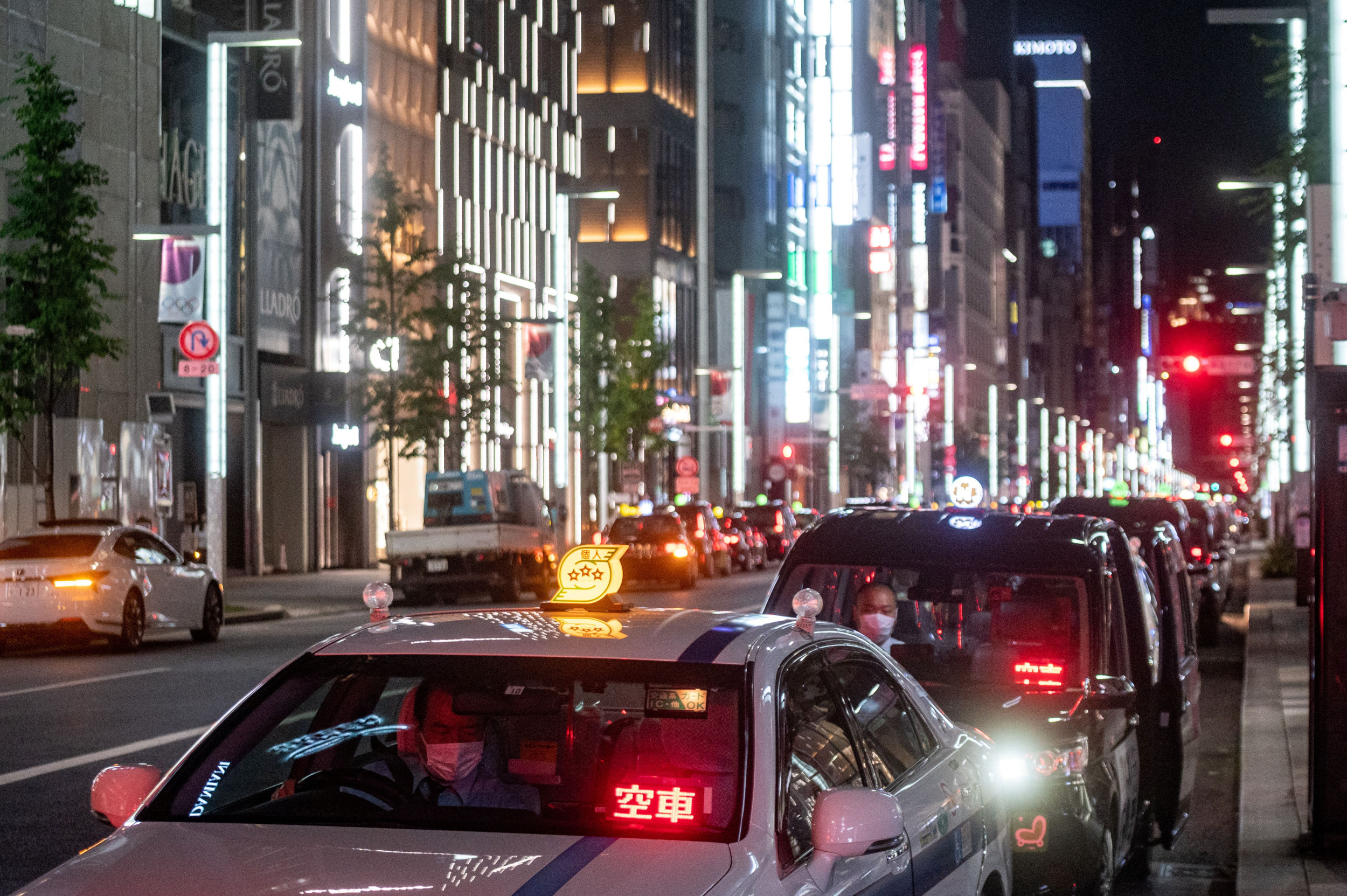Fashion
Why Is UNIQLO the Anti-Fast Fashion Fast Fashion Brand?

Defined by reliable old Merriam-Webster as clothing produced “quickly and cheaply” enough to stay on trend, the term “fast fashion” is also utilized as shorthand for everything that’s wrong with the fashion industry. For many shoppers, fast fashion is largely understood as a moral gray area, a broad descriptor for the destructive practice of pumping out disposable garments. “When we talk about fast fashion, we’re really talking about how quickly a store’s merchandise changes and how long it takes to get from concept to the sales floor,” says Myles Ethan Lascity, director of fashion media at Southern Methodist University. “Because of the short production time, it’s come to be associated with low-quality and even disposable clothing, but that’s not always the case.”
All of this helps explain why people say they don’t like fast fashion but buy it anyway, why some brands get slapped with the label even if they aren’t fast fashion, and, sometimes, a few proprietors of fast fashion escape the associated stigma. UNIQLO is the one brand perfectly situated to tell the story of this complex, dichotomous relationship. Because even though it serves up affordable basics, commercial team-ups, seasonal collections, and hyped drops that drive shoppers into literal frenzies across main streets in big cities around the world, UNIQLO is quite cool. Somehow, UNIQLO is capital-F Fashion, despite also definitely being quite fast.
It’s unmatched in terms of sheer virality, consistently dominating TikTok with seemingly simple stuff while being lauded as an example of “good value” and “natural fiber clothes.” Simultaneously, Gen Z, whose anti-fast-fashion vigilantes have tanked more than one brand’s attempt to shrug off fast-fashion associations, “flocks to” UNIQLO in such droves that a company exec noted earlier this year that over a third of UNIQLO’s 2023 sales came from women under the age of 29. “UNIQLO is often lumped into the fast fashion category, but, in my opinion, it’s really different,” Lascity says. “The main difference… is that you can always go to UNIQLO and know you’ll be back to find certain items. That’s not to say that’s all they sell but… that’s not the same for other brands we consider fast fashion.”
Indeed, CEO Tadashi Yanai insists that UNIQLO is peerless primarily because it isn’t fast fashion. “We don’t chase trends,” Yanai said in 2012. “People mistakenly say that UNIQLO is a fast fashion brand. We’re not.” It’s true that UNIQLO doesn’t rip from the runways or sling wares at SHEIN’s ethically concerning speeds but it does produce a massive amount of low-cost seasonal clothing, upwards of “a million units” per product. Instead of buzzy patterns or fleeting ”-core” aesthetics, UNIQLO’s trend adherence manifests in subtly contemporary cuts, with trousers cut a bit looser or slightly boxier sweaters that better meet today’s tastes. A market analyst once appropriately described UNIQLO as “a ‘diet’ fast fashion brand.”
“Unlike the competition, UNIQLO focuses on ‘classic’ instead of micro fashion cycles, which tend to have long acceptance periods,” says Shubh Majumdarr, PHD Scholar at the Indian Institute of Management, Ranchi. “Due to affordability, advanced supply chain and global scale… UNIQLO shares some characteristics with fast fashion industries but doesn’t fully align with a typical fast fashion business model. … I believe it’s more of a casual clothing brand, with advantages of both luxury and fast fashion.”
So what does it really mean that UNIQLO is a different kind of beast? It’s a piecemeal formula that relies on careful calculation of exclusivity, high-brow collabs, art-world ties, patient marketing, and perceived quality.
For one, you can’t find UNIQLO in any mall in the midwest of America. UNIQLO, founded in late ‘40s Japan, only operates 72 stores in North America (53 in the US, 19 in Canada), compared to competitors that operate literally hundreds of stores in the US alone. As such, compared to its ubiquitous peers, UNIQLO is so hard to come by that visits (and the clothes purchased during them) feel like a luxury.
As if to cement that perspective, UNIQLO is the only fast fashion label of its scale to develop honest-to-goodness partnerships with critically respected high fashion designers. For example, LOEWE creative director JW Anderson, who placed Roger Federer’s UNIQLO sportswear in arthouse smash Challengers, has been creating UNIQLO collections since 2017; Modest luxury savant Christophe Lemaire has been overseeing UNIQLO U since joining the company in 2016 (UNIQLO, in turn, invested in his eponymous luxury line two years later); Clare Waight Keller succeeded well-respected tenures at Chloé and Givenchy with a dedicated UNIQLO line in 2023, eventually becoming UNIQLO’s overall creative director in September 2024.
“The designer collabs are generally fashionable names, but not exactly household names, which I imagine helps keep the collaboration going,” notes Lascity. “From a consumer standpoint, developing these longer-term relationships underscores that UNIQLO is not a fast fashion retailer where you don’t know what is going to be on the shelves, but a dependable place where you can find diffusion lines from these designers. I imagine that’s strategic, a way to set themselves apart.”
And then there’s UNIQLO’s ties to the art world. UNIQLO has wooed names like KAWS, Daniel Arsham, and the respective estates of Warhol, Lichtenstein, Basquiat. If an artist is a household name (at least to hypebeast households), they’ve likely got a UNIQLO shirt –– printed on proudly plain single-color T-shirts tasteful enough for daily wear –– under (or above) their belts. But UNIQLO also comfortably dwells in the realm of mass-market entertainment, epitomized by franchise-makers like Disney, Studio Ghibli, and manga anthology titan Shonen Jump. Though other “fast fashion” brands similarly collaborate with international imprints, only UNIQLO consistently does so under the auspices of creating quality merch for grown-ups.
This is key because it unlocks a core proponent of UNIQLO’s appeal: The appearance of tasteful quality, regardless of whether or not the products are or are not. “The products are designed to last, with enhanced comfort and utility, due to fabric innovation and incorporation of customer feedback,” says Majumdarr, pointing to UNIQLO’s “long-term collaboration” with manufacturers like Toray Industries as further evidence of dependable quality, underscored by proprietary material innovations like Heattech (woven-in insulation) and AIRism (heightened breathability). Shoppers aren’t just made to feel like they’re getting more for their money — they’re getting garments for the long haul.
The fashion industry is not unlike the publishing business given that, in both cases, books are judged by their covers. But this surface-level assessment only works in UNIQLO’s favor. This past February, for instance, budgeting podcast StreetCents grappled with the debate over UNIQLO’s fast fashion status. The verdict? UNIQLO is, at most, “maybe” fast fashion because instead of chasing trends “like Zara or SHEIN,” it offers “classic basics” that “last a little bit longer,” an opinion echoed in another creator’s TikTok video. “The quality is worth every penny,” opined a comment on the latter. To be clear, the exact metric being used to discern “quality” here isn’t entirely comprehensible — none of these folks are, say, gauging fabric origin, stitching consistency, or the grams per square meter (GSM) as evidence of said quality. Instead, they’re left with the notion that UNIQLO “seems to be good quality” because it appears timeless and because its staples appear hardy, with many shoppers pointing to the longevity of their UNIQLO products as proof.
“When we’re talking about the quality of clothing, we’re talking about garments that are going to last over time and through multiple wears; ideally, the garments won’t lose their shape, pill, tear, or look overly worn.” says Lascity. “I’m not a designer or conservator, so it’s hard for me to say that UNIQLO is distinctly better quality than its competitors. But if you look at something like UNIQLO’s graphic tees, they are made of a heavier material, which, in theory, should indicate they’re a bit better quality and more likely to last.”
As with its quality, UNIQLO’s enduring appeal has a lot to do with its careful construction of itself as a humble home to modest clothing. Dating back to a 2011 campaign that positioned David Chang, John Leguizamo, and Susan Sarandon as genuine UNIQLO fans, UNIQLO leveraged a narrative that real people really like its real clothes enough to really rep them of their own volition (though they clearly are paid to), a marketing notion expanded to international scale over the years, especially with the recent Roger Federer campaigns.
But despite its success in positioning itself as anti-fast fashion, UNIQLO still embodies ample fast fashion traits. It produces a massive amount of low-cost seasonal clothing, for example, sometimes upwards of “a million units” per product. Its stores are large, sprawling complexes packed with hundreds of SKUs ranging from seasonal stuff like linen jackets and corduroy trousers to perpetual offerings like socks and underwear. A little digging even turns up occasional practices arguably deserving of concern, some provable and some anecdotal, but nothing concrete enough to weigh down UNIQLO’s image.
Still, if UNIQLO’s fast fashion inclinations are arguable, sister label GU is wholly unambiguous. In 2024, Fast Retailing began an international push with GU, targeting younger Western shoppers craving cheaper, faster fashion. Compare a trim $50 UNIQLO wool sweater against an entirely inorganic GU pullover that sells for a mere $30 — a minor difference to adult shoppers but a far more reasonable proposition to younger ones. Never mind that “100% wool” doesn’t necessarily mean “100% quality, ethically sourced and fabricated wool,” but this allows UNIQLO to maintain an aura of patient quality while its ironically named parent company cashes in with trendy fare.
All of this stuff is readily unrecoverable with a Google search. But the cultural response to UNIQLO remains one of broad praise. At least partially due to its unambiguous presentation, UNIQLO prompts unambiguous acceptance, even as its once-bargain prices creep upwards. “As a fan of UNIQLO for over a decade, [I find its] basics unparalleled to this day,” self-described “niche fashion enthusiast” @ambyance tells me. “Fast fashion? Yes and no because while [UNIQLO] is quite cheap, it lasts forever. I have tees and socks that I’ve worn hundreds of times and still have no holes. The bang for buck was off the charts! But people who frequent UNIQLO tend to be subject to seasonal trends and buy more frequently, core tenets of fast fashion.”









